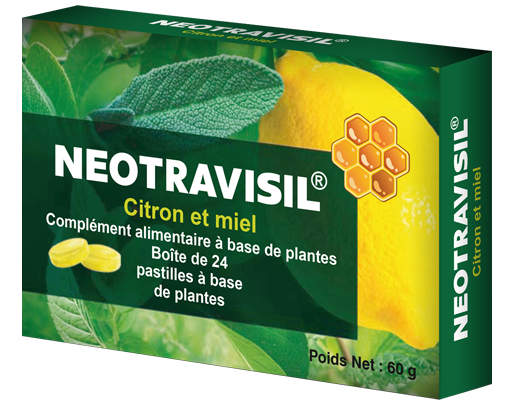
Other names: spikelet mint, garden mint, curly mint.
Spearmint is a perennial herb with small white or pinkish flowers and a characteristic "mint" smell. Spearmint belongs to the genus Mentha (mint) - a large taxonomic group, of which about 18 species are used only for decorative and medicinal purposes. Wild species of mint are prone to cross-pollination, resulting in interspecific hybrids that combine the characteristics of different species.
In ancient Greek mythology, mint was associated with the myth of the nymph Mint (Menta) - the patroness of rivers, meadows, and gorges. According to one of the legends, the lord of the underworld Hades fell in love with her, and Cora (Persephone), his wife and goddess of the underworld, turned the nymph into a fragrant plant - mint (in Greek "minthe").
Since ancient times, mint has been used as a spice in the preparation of dishes, sweets and drinks; it was highly valued in ancient Rome. Rooms were sprayed with mint water, and tables were rubbed with mint leaves to cheer up guests and liven up conversation. The mint herb was believed to stimulate the mind - in modern terms, it stimulates the brain; this belief was also reflected in the tradition of medieval students to wear mint wreaths on their heads when special mental efforts were required, for example, at exams.
The main chemical product for industry and medicine, obtained from different varieties of mint, is essential oil.
As for spearmint, its essential oil contains a minimum amount of menthol and menthone (no more than 5% menthone). In each case, the chemical composition of peppermint oil depends on the type and duration of harvest. The main component of spearmint essential oil - (R-) carvone - is about 40%, but it can reach more than 55% of the total mass of the oil [4,5]. The oil does not leave the mouth feeling cold, unlike peppermint essential oil.
The fragrant terpenoid substance carvone exists in nature in the form of two isomers: (R-) carvone smells like mint and it is precisely it that is the main component of spearmint essential oil; mirror to him (S +) smells of cumin and dill and is not included in spearmint. Spearmint and its essential oil are widely used in the production of cosmetics and perfumery, medicine.
The physiological activity of spearmint is also varied. In the human body, it has:
- General calming effect;
- Antimicrobial action;
- Antifungal action;
- Analgesic effect;
- Antioxidant action;
- Stimulates digestion.
The use of mint in medicine
Traditionally, peppermint oil is recommended for the treatment of inflammatory diseases of the upper respiratory tract, headaches and migraines, and appetite disorders.
According to the latest microbiological and biochemical studies, spearmint essential oil is able to resist various microbes - Staphylococcus aureus, Escherichia coli, Salmonella, etc., as well as fungi and yeast.
According to the latest microbiological and biochemical studies, spearmint essential oil is effective against a variety of microbes.
In other experiments, after inhalation of vapors of spearmint essential oil in humans, the functional parameters of lung function and the results of physical exercises improved, which indicates a positive effect of spearmint on the activity of the respiratory system and the work of the body as a whole.
Mint herb and its essential oil are found in many traditional medicines and medicines to treat and "soothe" sore throats of various origins. Thanks to its general soothing, analgesic and mild distraction effect, mint is effective in relieving sore throat and dry cough in upper respiratory tract infections, giving a feeling of relaxation and freshness. The antimicrobial effect of spearmint in the composition of medicinal lozenges and tablets helps to eliminate pathogens in the oral cavity and prevents their introduction into the mucous membranes of the respiratory tract.
References:
1. Rozhdestvensky D.А. Clinical pharmacology of medicines based on essential oils. Medical News, no. 10, 2015, 16-19.
2. Jaradat NA, Zabadi H., Rahhal B., Hussein AM, Mahmoud JS, Mansour B., Khasati AI, Issa A. The effect of inhalation of Citrus sinensis flowers and Mentha spicata leave essential oils on lung function and exercise performance: a quasi-experimental uncontrolled before-and-after study. J Int. Soc. Sports Nutr., 13: 36b 2016. eCollection 2016.
3. Ruchkina N. Mint // Chemistry and Life. No. 1, 2014.
4. S.A. Voitkevich. Essential oils for perfumery and aromatherapy. M. Food industry, 1999.
5. Mejd, Snoussi & Noumi, Emira & Trabelsi, Najla & Flamini, Guido & Papetti, Adele & De Feo, Vincenzo. (2015). Mentha spicata Essential Oil: Chemical Composition, Antioxidant and Antibacterial Activities against Planktonic and Biofilm Cultures of Vibrio spp. Strains. Molecules. 20. 14402-14424.
6. Fitsiou E., Mitropoulou G., Spyridopoulou K., Tiptiri-Kourpeti A., Vamvakias M., Bardouki H., Panayiotidis M.Ι., Galanis A, Kourkoutas Y, Chlichlia K, Pappa A. Phytochemical Profile and Evaluation of the Biological Activities of Essential Oils Derived from the Greek Aromatic Plant Species Ocimum basilicum, Mentha spicata, Pimpinella anisum and Fortunella margarita. Molecules, 21 (8), 2016, 1069.






